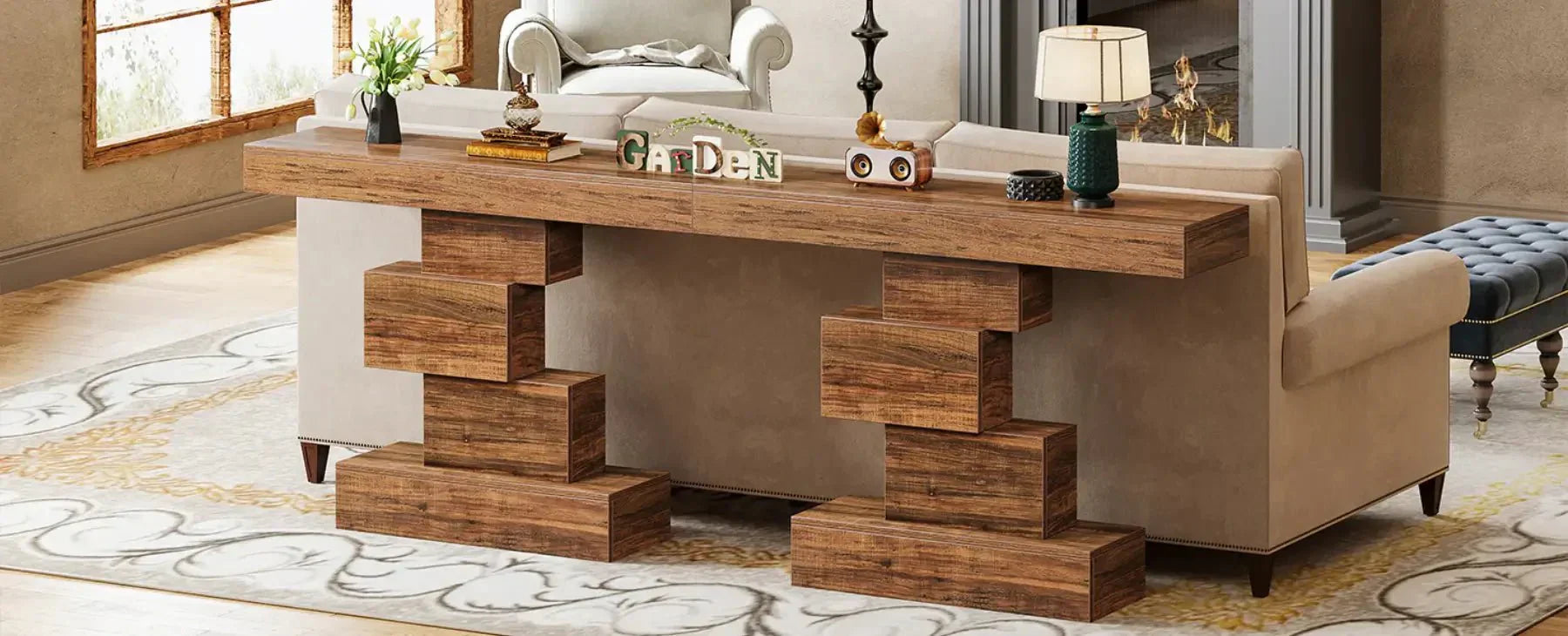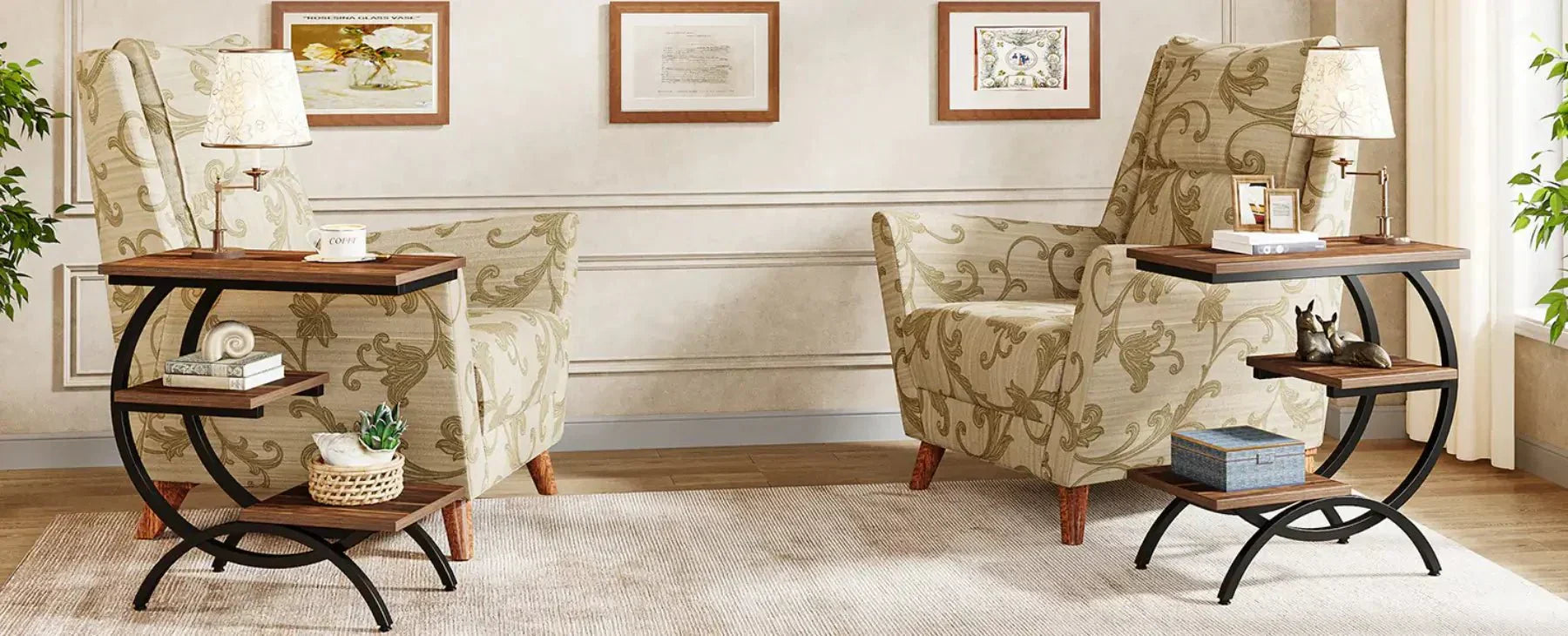In today's furniture landscape, engineered wood has become the cornerstone of thoughtful design and responsible manufacturing. This versatile material represents the perfect marriage of innovation and practicality, offering British homeowners beautiful, durable furniture that stands up to daily life while being kinder to both your budget and the environment.
Rather than relying solely on solid timber, engineered wood transforms wood fibres, chips and veneers into stable, reliable panels through advanced manufacturing processes. From sleek media units to spacious wardrobes, it's the unsung hero behind much of the well-designed furniture in contemporary UK homes.
Understanding Engineered Wood
Engineered wood encompasses various materials created by bonding wood elements with adhesives under heat and pressure. Unlike solid wood cut directly from logs, these composite materials are engineered for enhanced performance - offering greater stability, consistency and resistance to the humidity changes common in British homes.
Key benefits include:
- Superior Stability - Less prone to warping or shrinking than solid wood
- Sustainable Credentials - Makes efficient use of wood resources
- Design Flexibility - Available in various finishes and thicknesses
- Excellent Value - Delivers consistent quality at accessible price points
Advantages and Considerations
Strengths:
- Climate Resistance - Performs well in variable humidity conditions
- Eco-Conscious - Utilises fast-growing species and production waste
- Visual Consistency - Offers uniform surfaces ideal for modern finishes
- Structural Reliability - Manufactured to precise specifications
Considerations:
- Moisture Management - Some types require protection from dampness
- Weight Factors - High-density options can be substantial
- Refinishing Limits - Most types cannot be repeatedly sanded
- Quality Variations - Performance depends on manufacturing standards
At Tribesigns, we select engineered woods that balance durability with aesthetics, ensuring our furniture meets the demands of everyday British life while maintaining its beautiful appearance.
Common Types Explained

1. Laminated Veneer Lumber (LVL)
Laminated Veneer Lumber (LVL) is created by bonding multiple thin wood veneer layers with their grains aligned in the same direction. This construction gives it excellent strength for load-bearing and resistance to warping, making it more stable than many solid woods.
Due to its durability and consistent quality, LVL is often chosen for structural components in well-made furniture. You'll typically find it forming the core framework of dining tables, the base structure of sofas, and the supporting beams in larger cabinets. While it comes at a higher cost than some other engineered woods, its reliability makes it a valuable choice for furniture that needs to withstand long-term use.
2. Laminated Strand Lumber (LSL)
At Tribesigns, we use LVL in key structural areas where strength and stability are most important, ensuring our furniture maintains its integrity over time.
Laminated Strand Lumber (LSL) is produced by compressing long wood strands with adhesive under heat and pressure. This process results in a dense and uniform panel known for its reliable strength and dimensional stability.
While the surface of LSL is not typically designed to be visible, it offers excellent structural performance in concealed applications. It is commonly used for internal supports in wardrobes, bookshelf frames, and other furniture components where strength is prioritized over appearance. These parts are usually finished with veneer or paint to match the overall design.
At Tribesigns, we select LSL for internal structural elements where its strength and stability ensure the long-term durability of our furniture, while keeping it hidden from view to maintain a clean aesthetic.
3. Oriented Strand Board (OSB)
Oriented Strand Board (OSB) is manufactured by compressing wood strands arranged in cross-oriented layers, forming large, sturdy panels. Known for being cost-effective and dimensionally stable, it serves as a practical choice for structural applications where appearance is secondary.
In furniture making, OSB is typically used in non-visible areas such as wardrobe backs, bed bases, and internal supports. Due to its textured and uneven surface, it is almost always covered with laminate, veneer, or paint when used in visible parts, ensuring a finished and cohesive look.
At Tribesigns, we utilise OSB in structural roles where its strength and affordability are advantageous, always ensuring it is properly finished or concealed to maintain the aesthetic quality of our furniture
4. Plywood
Plywood is a well-established engineered wood, made by bonding multiple thin wood veneers with their grains layered perpendicular to one another. This cross-grain construction provides remarkable stability and significantly reduces the risk of warping or splitting.
With its smooth surface and structural integrity, plywood can be left with a natural finish or topped with decorative veneers. This makes it a versatile choice for both visible furniture parts—such as cabinet doors, tabletops, and shelving—and internal structural components.
At Tribesigns, we often select plywood for applications where a balance of strength, workability, and aesthetic appeal is important, ensuring our furniture remains durable and visually consistent over time.
5. Medium-Density Fiberboard (MDF)
Medium-Density Fiberboard (MDF) is made by compressing fine wood fibers with resin into dense, uniform panels. This process creates an exceptionally smooth surface that is ideal for painting or applying laminated finishes.
As an affordable and versatile material, MDF is widely used for cabinet doors, shelves, and decorative trims. However, it is important to note that standard MDF is susceptible to moisture and should not be used in high-humidity areas such as bathrooms or around sinks.
At Tribesigns, we use premium-grade MDF in products like our shoe racks and console tables, where its smooth finish allows for a flawless painted surface, while the thickened panels provide better durability for everyday use.
6. Particle Board
Particle board is an engineered wood product made by pressing wood chips and sawdust with adhesive into solid panels. Known for being lightweight and cost-effective, it serves as a practical material for budget-conscious furniture.
This material is commonly used in interior components such as desk surfaces, bookshelf panels, and wardrobe backing. While it performs adequately in dry indoor conditions, particle board has limited load-bearing capacity and is susceptible to damage from moisture. Therefore, it's best suited for applications where it won't be exposed to heavy weights or damp environments.
At Tribesigns, we may use particle board in select non-structural elements where its economic advantages align with functional requirements, while ensuring proper finishing for durability.
7. High-Density Fiberboard (HDF)
High-Density Fiberboard (HDF) shares a similar manufacturing process with MDF but is compressed to a higher density, resulting in a stronger and more impact-resistant material. This makes it suitable for applications requiring enhanced durability.
Common uses of HDF include flooring underlays, heavy-duty countertops, and robust cabinet doors. While it offers better resistance to moisture compared to standard MDF and can withstand greater loads, it is also heavier and comes at a higher cost.
At Tribesigns, we select HDF for specific components where superior strength and longevity are essential, ensuring these pieces maintain their integrity even under regular use.
8. Composite Board
Composite board is an engineered material that combines different core components—such as MDF, particle board, or wood-plastic composites—to achieve specific performance characteristics. This flexibility allows it to be tailored for improved moisture resistance, durability, or lighter weight, depending on the intended use.
Suitable for a range of applications, composite board can be found in both outdoor furniture and versatile indoor storage solutions. Its overall quality and performance, however, are closely tied to the manufacturing standards and materials used in its production.
At Tribesigns, we consider composite board for specialized applications where particular properties—such as moisture resistance for certain environments—are needed, always prioritizing consistent quality and real-world performance.
9. Cross-Laminated Timber (CLT)
Cross-Laminated Timber (CLT) consists of multiple layers of solid timber stacked at right angles and bonded together, similar in construction to plywood but using thicker boards. This cross-layered design gives it significant structural strength, making it suitable for both building construction and large-scale furniture.
In furniture design, CLT is often used for substantial pieces such as large tabletops, bench seats, and room dividers. Its exposed edges and visible wood grain contribute to a natural, architectural aesthetic that complements modern and industrial interiors.
At Tribesigns, we consider CLT for statement furniture pieces where its structural integrity and distinctive appearance can be showcased, aligning with designs that emphasize both scale and material authenticit
10. Parallel Strand Lumber (PSL) / I-Joists
Parallel Strand Lumber (PSL) is an engineered wood product made by bonding long, aligned wood strands under pressure. This process creates a material with excellent strength for both bending and compression, making it particularly well-suited for long-span applications in furniture, such as large conference tables or extended dining surfaces.
I-Joists, typically constructed with LVL or OSB in an I-shaped profile, provide strong structural support while remaining relatively lightweight. This combination of strength and efficiency makes them a practical choice for furniture frames and supports where minimizing bulk is important.
At Tribesigns, we consider these specialized materials for furniture designs requiring exceptional structural performance over longer spans, ensuring stability without compromising on form or functionality.
Ideal Applications for Your Home
1. Living Spaces
MDF and plywood excel in creating elegant media units, bookshelves and console tables that combine style with practicality. Their stable nature ensures furniture retains its shape through seasonal changes.
2. Bedroom Solutions
From spacious wardrobes to stylish bedside tables, engineered woods provide the perfect foundation for bedroom furniture that organises your space while enhancing its aesthetic.
3. Home Office
Create a productive workspace with desks and storage units that offer durability and clean lines, standing up to daily use while maintaining their professional appearance.
4. Entryway Essentials
Welcome guests with console tables and shoe storage that handle Britain's wet weather without compromising on style.
Frequently Asked Questions
1. Is engineered wood suitable for UK homes?
Absolutely. When properly manufactured, engineered wood performs excellently in British climates. Its inherent stability helps it withstand central heating in winter and higher humidity in summer better than many solid woods.
2. How does it compare to solid wood?
While solid wood offers traditional charm, engineered wood provides superior stability and more consistent performance. Many homeowners appreciate its reliability and modern aesthetic.
3. Can engineered wood be sustainable?
Yes. Look for products carrying FSC or PEFC certification, indicating responsible sourcing. Engineered wood's efficient use of materials makes it an environmentally conscious choice.
Making an Informed Choice
Understanding engineered wood empowers you to select furniture that aligns with your lifestyle, values and aesthetic preferences. This remarkable material has revolutionised furniture design, making beautiful, functional pieces accessible to more households while promoting sustainable practices.
At Tribesigns, we harness the potential of engineered wood in collections that blend intelligent design with everyday practicality. From our sleek home office solutions to versatile living room storage, we choose materials that deliver lasting performance without compromising on style or environmental responsibility.
By selecting quality engineered wood furniture, you're not just furnishing your home - you're investing in pieces that balance beauty, durability and thoughtful resource use, creating spaces that feel both contemporary and consciously crafted.



